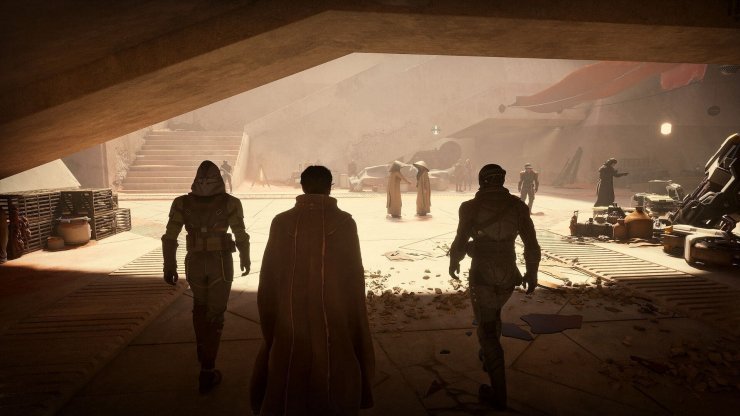Arrakis awaits, and survival becomes easier with allies at your side. As Dune Awakening's early access draws players into this reimagined universe, many seek to explore the desert planet with friends. However, setting up multiplayer parties requires understanding specific mechanics and permission systems.

Essential Steps to Invite Friends
Creating your desert alliance starts with these straightforward steps. First, boot up Dune Awakening and access the map screen. Next, open the Social Menu to begin your friend search process.
Within the Social Menu, navigate to the players tab. Then, search for your friends using their exact account names. Once you locate them, send friend requests and wait for acceptance.
After your friends accept the requests, you can invite them to your party. Alternatively, check the Friends Invite tab to accept incoming requests from your allies.
Critical Server Requirements
Before diving into multiplayer adventures, ensure compatibility with your teammates. You and your friends must join the same server and sietch. This requirement proves crucial for successful party formation.
Moreover, coordinate these details before launching the game. Otherwise, you'll waste time troubleshooting connection issues instead of exploring Arrakis together.
Quick Party Formation with Strangers
Sometimes, desert encounters lead to unexpected alliances. Fortunately, Dune Awakening makes spontaneous team-ups simple and intuitive.
Stand next to any player and hold the interact button. Subsequently, a radial menu appears with various social options. From there, select the party invite option to extend your invitation.
Understanding Permission Systems and Roles
Multiplayer success depends heavily on proper permission management. The game features three distinct roles, each with specific access levels and responsibilities.
Owner Privileges
Owners possess complete control over their bases and resources. They can add or remove players from groups while promoting or demoting team members. Additionally, owners access all base facilities, doors, chests, and machines. Furthermore, they can place deployables within their base range and manage building construction. Finally, owners control the sub-fief console entirely.
Co-Owner Responsibilities
Co-owners share most privileges with the base owner. They can view ownership menus and add or remove group members. However, they cannot promote or demote other players within the group. Nevertheless, co-owners maintain general access to base facilities and can place deployables. They also handle building management tasks effectively.
Associate Limitations
Associates represent the most restricted role in the hierarchy. They can only view ownership menus without making changes. Moreover, associates cannot add, remove, promote, or demote group members. Despite these limitations, they retain access to base facilities and can place deployables. However, associates cannot manage building construction or access sub-fief controls.
Smart Permission Management Strategies
When playing with strangers, exercise caution with resource sharing and access levels. Granting unknown players complete base access creates unnecessary risks for your progress.
Therefore, manage party member roles carefully through the social menu. Start with associate-level permissions for new players until trust develops naturally.
Consider the long-term implications of each permission grant. Once someone accesses your resources, recovering from potential losses becomes challenging.
Avoiding Progression Pitfalls
Multiplayer parties can sometimes disrupt the intended game experience. Specifically, joining late-game players allows access to advanced content prematurely.
This content skipping often breaks the game's carefully crafted progression system. Consequently, the immersive Dune experience suffers when players bypass intended challenges.
Check party member levels before accepting invitations. Similarly, be mindful of the content you're accessing relative to your natural progression.
Maximizing Team Survival Benefits
The harsh desert environment becomes more manageable with proper teamwork. Resource collection speeds up significantly with multiple players gathering materials simultaneously.
Furthermore, team members can share specialized knowledge about crafting and survival techniques. This collaboration proves invaluable during challenging encounters with sandworms and other threats.
Combat situations also benefit from coordinated team efforts. While one player distracts enemies, others can flank or provide support fire.
Conclusion
Mastering Dune Awakening's multiplayer systems enhances your desert survival experience significantly. Through careful friend management, smart permission allocation, and strategic team coordination, you'll thrive on Arrakis.
Remember to prioritize server compatibility and maintain appropriate caution with stranger permissions. With these foundations in place, your journey through this reimagined Dune universe becomes both safer and more enjoyable.










Comments